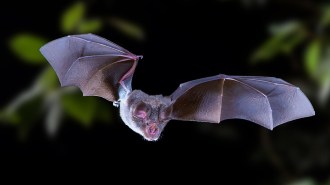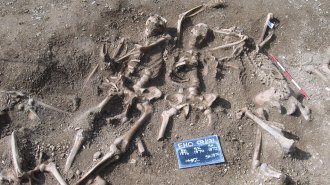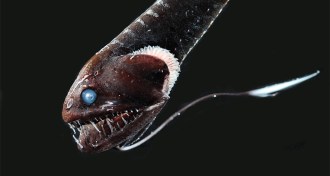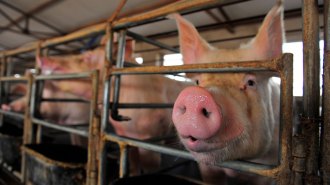
Erin Garcia de Jesús is a staff writer at Science News. She holds a Ph.D. in microbiology from the University of Washington, where she studied virus/host co-evolution. After deciding science as a whole was too fascinating to spend a career studying one topic, she went on to earn a master’s in science communication from the University of California, Santa Cruz. Her writing has appeared in Nature News, Science, Eos, Smithsonian Voices and more, and she was the winter 2019 science writing intern at Science News.

Trustworthy journalism comes at a price.
Scientists and journalists share a core belief in questioning, observing and verifying to reach the truth. Science News reports on crucial research and discovery across science disciplines. We need your financial support to make it happen – every contribution makes a difference.
All Stories by Erin Garcia de Jesús
-
 Health & Medicine
Health & MedicineFive big questions about when and how to open schools amid COVID-19
Researchers weigh in on how to get children back into classrooms in a low-risk way.
-
 Health & Medicine
Health & MedicineCoronavirus outbreak at a Georgia overnight camp infected over 200 kids and staff
A report documenting a COVID-19 outbreak in Georgia hints that children might play a key role in spreading the virus.
-
 Animals
AnimalsAn immune system quirk may help anglerfish fuse with mates during sex
Deep-sea anglerfish that fuse to mate lack genes involved in the body’s response against pathogens or foreign tissue.
-
 Health & Medicine
Health & MedicineClose relatives of the coronavirus may have been in bats for decades
The coronavirus lineage that gave rise to SARS-CoV-2 has been circulating in bats for around 40 to 70 years, a study suggests.
-
 Archaeology
ArchaeologyAncient DNA suggests Vikings may have been plagued by smallpox
Viral genetic material from human remains provides direct evidence that smallpox infected people dating back to the year 603.
-
 Animals
AnimalsHow some superblack fish disappear into the darkness of the deep sea
Some fish that live in the ocean’s depths are superblack as a result of a special layer of light-absorbing structures in the skin.
-
 Health & Medicine
Health & Medicine4 reasons not to worry about that ‘new’ swine flu in the news
Researchers identified a pig influenza virus that shares features with one that sparked the 2009 pandemic — that doesn’t mean another one is imminent.
-
 Health & Medicine
Health & MedicineHere’s what we’ve learned in six months of COVID-19 — and what we still don’t know
Six months into the new coronavirus pandemic, researchers have raced to uncover crucial information about SARS-CoV-2. But much is still unknown.
-
 Health & Medicine
Health & MedicineCOVID-19 lockdowns helped people get more, but not necessarily better, sleep
Two studies report that people began sleeping more and more regularly after countries imposed stay-at-home orders to slow the coronavirus’ spread.
-
 Earth
Earth50 years ago, scientists were getting a better glimpse inside storms
In 1970, experts were harnessing technologies that provided a three-dimensional picture of the inside of a storm.
-
 Health & Medicine
Health & MedicineHow often do asymptomatic people spread the coronavirus? It’s unclear
A WHO official said people without COVID-19 symptoms rarely spread the virus, but there’s a lot that researchers don’t yet understand.
-
 Health & Medicine
Health & MedicineLockdowns may have averted 531 million coronavirus infections
Policies that kept residents at home and closed businesses were largely effective at slowing the pandemic’s spread, two studies suggest.